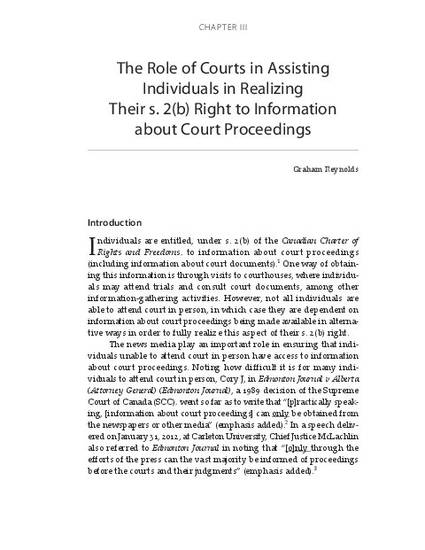
- right to information,
- courts
In this paper, I argue that Canadian courts ought to take all reasonable steps to assist individuals in fully realizing their s. 2(b) right to information about court proceedings, both by providing individuals with online access to information about court proceedings (directly and by partnering with third parties), and by implementing policies on the use of electronic devices in courts that minimize restrictions on the ability of individuals and news media to disseminate information about court proceedings to the public. This paper will proceed as follows. I will begin by establishing that individuals are entitled, under s. 2(b) of the Charter, to information about court proceedings (see below). I will also demonstrate how this aspect of an individual’s s. 2(b) right to freedom of expression is linked to, but separate from, the open-court principle. Next, I will discuss the technological developments that have enhanced the ability of parties other than the media (such as courts themselves and members of the public) to disseminate court information quickly and efficiently to the public (see page 100). In the part that follows, I will describe how Canadian courts have used these technological developments to provide a significant degree of court information to the public, either directly or in partnership with other parties. I will then describe the electronic-device policies enacted by Canadian courts. At the same time as Canadian courts have made additional information about court proceedings available online, a number of courts have also enacted policies regarding the use of electronic devices in courtrooms that—at least in some cases—have significantly limited the extent to which both media and members of the public can disseminate court information. Finally, I will discuss the types of limitations that might be imposed on court information made available online and on the use of electronic devices in courts, in order to protect countervailing constitutional rights and values such as privacy (see page 108).
